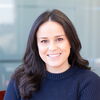Tracking the elusive young Mainer | In the nation's oldest state, some businesses search for a new audience
The Sunday edition of the Lewiston Sun Journal contains an oddity, a section unlike any in a Maine newspaper, and one that may strike long-time newspaper readers as odd or even disconcerting. It's heavy on graphics and color, and light on the kind of coverage — car crashes or town meetings — that traditionally pass for newspaper news. The section even has a quirky little name: b. That's it. Just b.
Launched in June, the "b" section is the Sun Journal's attempt to draw a younger audience. The 21st century, after all, has not been kind to daily newspapers. The popularity of the Internet has drained daily papers of readers, who suddenly have thousands of online news sites at their fingertips, and classified advertising. As a result, revenues generally are down at many dailies. So is circulation, which between 1994 and 2004 dropped eight percent among the nation's daily newspapers, according to the Newspaper Association of America.
Would-be readers in their 20s and 30s, in particular, have been problematic. Forty, it seems, is a readership dividing line. "People over the age of 40 are extremely loyal to newspapers, and make it part of their daily ritual," says Rex Rhoades, executive editor of the Sun Journal. But many under 40 read a daily newspaper only occasionally — if at all.
To address the problem, the Sun Journal two years ago hired Boston-based consultants to poll about 400 younger residents in its coverage area on what they would like to see and read — finding that, like younger readers everywhere, they prefer shorter stories, coverage of non-traditional topics not often found in newspapers, and eye-candy graphics. Leadership at the Sun Journal took the advice seriously, and after months of debate over what form their youth-oriented product should take, committed to the effort. The company has marketed "b" extensively, allotted significant staff time to its production, and even spent $300,000 on two presses capable of meeting its graphic demands.
The "b" section may be the most obvious example, but the Sun Journal is hardly the only business in Maine trying to gain younger customers. Whether it's arts organizations eager for a different age mix in their audiences or financial services providers hoping to lock in young clients, targeting the young is, for obvious reasons, a sound business strategy. Gaining customers in their 20s or 30s could mean gaining customers for life. And it's hardly a novel concept: Any couch potato watching a program that isn't the evening news will see advertisement after advertisement aimed at the young.
But in Maine such efforts run into a hard demographic wall: The state has the nation's oldest population, and it is rapidly growing older. The U.S. Census Bureau says the state's median age has risen 2.6 years since 2000, to 41.2 years. In some parts of the state, especially areas hit hard by economic decline, a 30-year-old can seem as rare as a January mosquito.
The demographics suggest youth-seeking businesses such as the Sun Journal have a more difficult task here than they would in other states, raising a question: Are such attempts even worth the effort?
The limited returnsof a small market
At least one organization with a dearth of younger customers, the Portland Symphony Orchestra, has decided efforts to attract 20-, 30- and even 40-somethings don't merit the expense. Alice Kornhauser, the orchestra's director of marketing and public relations, concedes the organization's typical ticket buyer is older — but that hardly makes the Portland symphony unusual. A 2003 survey by the nonprofit John S. and James L. Knight Foundation of 15 symphonies nationally found that those in the 18-34 age group comprised just two percent of subscribers.
Kornhauser says symphonies find that families with children are exceeding difficult to attract to classical performances, but she doesn't necessarily see that as a problem. "You definitely see a big drop-off when people are in their 30s and 40s, and our bread and butter is the older crowd," she says. "But baby boomers are coming into that period of life, and I think the classical-music-is-dying argument is nonsense. I think classical music has always attracted an older audience."
Symphonies in other parts of the country, especially in large cities such as Boston or Chicago, have successfully marketed concerts to 20- and 30-year-olds. But Kornhauser doesn't believe such an effort would pay in southern Maine. "We have not put a tremendous amount of resources into cultivating people in that middle area," she says. "In some markets it works, because there are a lot of young professionals who have disposable income and don't have children yet. But Portland doesn't have that big of a population" of those people.
Neither does Bangor. Still, the Bangor Symphony Orchestra is interested in luring what young the region does have to its concerts. The orchestra in March inaugurated a Saturday night "Taste of the Symphony" that allowed the audience to watch a rehearsal the night before a Sunday afternoon performance. "We were targeting those who wanted something to do on a Saturday night," says Johnna Lacey, the symphony's marketing director. "We wanted to turn it into that date-night feelÂ… a laid-back, clubby feel."
The effort worked: Lured by a chocolate-and-champagne reception and the chance to ask the conductor, Xiao-Lu Li, questions, the night drew an atypical — and much younger — audience. And the orchestra plans to repeat the event next March. "We're looking for new audiences, and that could be anybody from age 20 to age 60," Lacey says. "But we know that there's a [group] out there, the young professionals, the 20- and 30-year-olds, and that they do like classical music."
Lacey and Kornhauser are both about 30 years old, which perhaps gives them added perspective on what marketing efforts will or won't appeal to those in their age group. "When you're talking about young professionals, that's me," Lacey says. "That's a big help."
At a typical newspaper, like at most businesses, those making decisions on new products and target markets are wrinkled by decades of life and work experience, while the lower steps of the ladder are occupied by the fresh faced. But for the "b" section, Rhoades says the Sun Journal's elders loosened their grip on the controls, deciding the paper's younger staffers had a better grasp of what would appeal to those their age. "If this succeeds, the key will be that we were willing to turn its construction over to that demographic, rather than have people who are 40 or 50 make the decisions," Rhoades says. "I think this was a daring effort, to say, 'You guys have enough rope to hang yourself. See what you can do with it.' And we tried to be true to their vision."
There are three people at the newspaper, Rhoades says, for whom "b" is a primary focus. That group includes reporter Kelly Morgan, 33, and Nick Masuda, 26, who oversees visuals and graphics at the newspaper and came to the Sun Journal four months ago from the San Jose Mercury News. Masuda says the prospect of working on a section devoted to younger readers was a major reason he moved east. "It's a generation that hasn't been addressed by newspapers," he says. "Working at a newspaper that puts an emphasis on those readers is important to me."
The "b" section is heavy on non-newsy features — a recent cover, for example, featured a piece on lawn mower racing — columns and entertainment listings. It's a mix that leads some to say there's no real news in "b" — a charge that rankles Masuda, who says what is thought to constitute news is too tightly defined. "I think there's a way to be entertaining and still provide news," he says. "And I think down the road, this will be what news is." And the section isn't afraid to address serious topics: A recent cover was devoted to the fifth anniversary of Sept. 11, 2001, and included an article on the terrorism fears faced by young parents. Still, the tone and feel of the section is quite different than what's found in other parts of the newspaper. "We're taking a chance that we're going to alienate some of our older readers," Masuda says. "The material in the 'b' section is laid out differently, it's written differently and it's thought out differently."
Content that appeals to a 25-year-old may not appeal to a 55-year-old — and may even offend the 55-year-old. And unlike most modern media, in which niche-driven content is the norm, the typical regional daily newspaper is a mass-market product that tries to attract everybody. "I guess that's kind of a curse and a blessing," Rhoades says. "We're one of the few remaining mass-market mediums. But on the other hand, you're always getting picked apart by the specialty publications."
Rhoades concedes the newspaper has received complaints about the racier-than-typical language contained within the section, as well as the presentation. Still, early returns on "b" have been agreeable, he and others at the newspaper say. Sunday circulation is holding steady, and most feedback has been positive — and not only from the young. Rhoades says, "We get e-mail from people in their 50s and 60s who like it."
Lower costs, and the value of the Internet
The Lewiston paper is not the only daily in Maine to launch features aimed at the young. The Portland Press Herald, for example, has sections with youth appeal such as iHerald, which encourages online reader interaction, and Monday Magazine, which recently featured articles on the cost of college textbooks and the blog-driven popularity of a band from Minneapolis.
But the look of youth-driven sections in other Maine newspapers don't differ dramatically from the rest of the newspaper, as the "b" section does. At the Bangor Daily News, Executive Editor Mark Woodward says the paper has considered launching a youth-driven special section, but says he's seen little evidence nationally that efforts such as "b" are effective in drawing new readers. He adds the paper has instead decided to tweak existing sections and sprinkle articles and features with youth appeal throughout the regular newspaper.
Tweaking the existing product also is the approach being taken by The Theater at Monmouth, which typically performs Shakespearean and classical plays. David Greenham, the theater's director, says he tries to throw plays into the mix — he cites the recent performance of "A Funny Thing Happened on the Way to the Forum" as an example — that have greater appeal to 20- and 30-somethings. Moreover, he says, the theater brings in special performances such as the New York-based Bindlestiff Family Cirkus that attract a young and hip crowd.
And there are other efforts, such as $10 last-minute tickets, designed to help get young patrons in the seats. "We feel like if we do good work, they'll come," Greenham says. "And we feel if we get them in the theater, they'll come back."
Lowering the cost of admission is a technique employed also by the Portland Museum of Art, which in 2004 also created a Contemporary Art Council to attract younger art patrons. Kristen Levesque, the museum's marketing and public relations director, says a substantial portion of its 20- to 40-year-old attendees arrive on Friday night, when the admission fee is waived.
Improving access for younger customers also means using the Internet to lure that demographic. Newspaper executives talk often about the migration of younger readers to the Internet, so it was natural the Sun Journal would give "b" a significant Web presence. It already occupies a significant portion of the newspaper's existing website — and may soon have a site all its own, Masuda says.
Newspapers aren't alone in using websites to attract the young. Accountant Sean O'Hare, head of South Portland-based O'Hare Associates, says his website, which is unusually sophisticated for a small accounting firm, has been useful in attracting younger clients. "A lot of people, especially people in their 20s and 30s, are looking at the Internet first" for information, O'Hare says. "I think a website now is like a Yellow Pages ad back in the 1970s — you're not really in business unless you have one."
Older clients are the low-hanging fruit for financial services firms — baby boomers nearing retirement, for example, naturally are more focused on their savings. But some firms don't want to wait to capture the next generation of customers. For example, O'Hare says he markets his firm's services to young doctors-in-training at Maine Medical Center in Portland by speaking frequently at events there and ensuring that firm brochures are displayed at the hospital. And for those in the financial services industry, attracting a 25- or 35-year-old client can mean decades worth of revenue. "I had somebody tell me they switch doctors more often than they switch CPAs," O'Hare says. "Usually once somebody has landed with a CPA, they're going to be with you, just because there's so much personal interaction and personal information that it's hard to go with somebody new."
That kind of loyalty is what newspapers — or any business — hope to build when they seek out a younger audience. And at the Sun Journal, the effort to attract readers to the "b" section represented one of the more extensive advertising campaigns in the newspaper's recent memory, says Kristen Cady, its marketing director. The newspaper marketed the section in new and different ways. "We don't normally do heavy TV or heavy radio," she says. "But we knew that we needed to do both of those."
The campaign, which ran for 10 weeks surrounding the launch of the section, "was very edgy, fast-moving, fast-paced," Cady adds. "It had a lot of energy, which is what we're trying to portray the section as having."
Some may doubt whether attracting the young is worth such an outlay of time and resources — especially in a rapidly graying state like Maine. But many at the Sun Journal seem convinced the effort is sensible. And Masuda, at least, knows for sure that "b" has attracted at least one new reader: his wife. "She doesn't read daily newspapers," he says. "She only reads the 'b' section, because she feels it's the only section written for her."










Comments